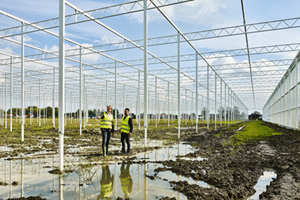Building Plans?

Small adjustments in the construction, design and execution of a new greenhouse can have a huge effect on the quality, sustainability, continuity of your business and in the end the insurability. Some examples that you should pay attention to: Construction and installations: Gable and roof system Screens Electricity Power failure If you want more information?
Calculate the construction of your greenhouse on the chosen melt factor of the roof. Be aware: this can be prohibited by building codes and legislation. If you calculate with a melt factor it is mandatory to open the screens in case of snow. Take this into account in the calculation for the heating capacity.
If possible, double out the installation and take provisions to minimize loss in case of an adverse event. For example: out of a risk based perspective two boilers of 5 MW are better than one of 10 MW.
his way, in case of a damage to your greenhouse, you can separate parts with a temporarily plastic partition wall and prevent ensuing damage to your crop.
Prevent damage of aluminum profiles by frost. The (ridge) profiles should not have closed chambers. If they do, it’s important that condensation can flow away in any circumstance.
Take measures for the risk of induction:
Take measures to be able to set up your equipment manually in case of failure of electronic systems and power failure. For example by installing special switches.
Ask our risk specialists for a free advice.